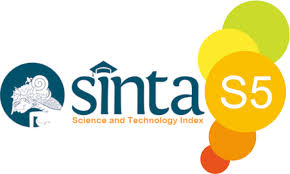Cultural Integration in Mathematics Learning: A Systematic Literature Review of the Ethnomathematics Approach
DOI:
https://doi.org/10.52188/jeas.v6i2.1443Keywords:
ethnomathematics, pedagogy, mathematics_education, cultural_integration, Systematic_Literature_ReviewAbstract
The integration of culture into mathematics education has become an innovative approach that increasingly attracts researchers and practitioners. Ethnomathematics, defined as the study of relationships between cultural practices and mathematical activities, provides a foundation for contextualized, meaningful, and relevant mathematics instruction. This approach not only facilitates students’ conceptual understanding but also encourages appreciation of local cultural values. In Indonesia, such integration aligns with the Merdeka Belajar curriculum, which emphasizes differentiation, inclusivity, and the development of the Profil Pelajar Pancasila. This study systematically reviews research on cultural integration in mathematics learning through the lens of ethnomathematics pedagogy, while mapping trends, contributions, and challenges. The method employed is a Systematic Literature Review (SLR) following PRISMA guidelines. Articles were collected from international databases (Scopus, ERIC, DOAJ) and national sources (Google Scholar, Garuda), covering publications from 2010 to 2024. A structured selection process was conducted through identification, screening, eligibility assessment, and synthesis. From 162 initial articles, 24 met the inclusion criteria and were analyzed in depth. Data were examined with respect to cultural contexts, pedagogical strategies, and theoretical as well as practical implications. The findings highlight three main contributions. First, in the cognitive domain, students showed improved conceptual understanding and problem-solving skills when mathematics was embedded in cultural contexts. Second, from an affective perspective, ethnomathematics fostered motivation, positive attitudes, and interest in learning. Third, in the socio-cultural domain, this approach strengthened students’ cultural identity and helped preserve local knowledge in formal education. Challenges remain, including limited reference materials, insufficient teacher competence, and lack of explicit curricular support. In conclusion, integrating culture into mathematics education through ethnomathematics not only enhances academic outcomes but also promotes character development and cultural sustainability. The study emphasizes the need for further applied research, development of culturally responsive resources, and teacher training to support sustainable implementation.
References
Achor, E. E., Omoifo, C. N., & Ekwueme, C. O. (2021). Ethnomathematics and students’ problem-solving skills: Integrating cultural practices into mathematics classrooms. Journal of Mathematics Education, 14(2), 115–128.
Achor, P. M., & Ukeje, O. (2017). Cultural games as tools for mathematics instruction in Nigeria. African Journal of Educational Studies, 12(1), 56–68.
Alangui, W. V. (2010). Ethnomathematics and multicultural mathematics education: Theoretical and pedagogical considerations. University of Auckland.
Ascher, M. (2014). Mathematics elsewhere: An exploration of ideas across cultures. Princeton University Press.
Bishop, A. J. (2012). Mathematics education and culture. Educational Studies in Mathematics, 19(2), 179–191.
Bishop, A. J. (2017). Mathematical enculturation: A cultural perspective on mathematics education. Springer.
D’Ambrosio, U. (2016). An overview of the history of ethnomathematics. ZDM Mathematics Education, 48(4), 601–607.
D’Ambrosio, U. (2018). Ethnomathematics and its place in the history and pedagogy of mathematics. Mathematics and Culture, 15(2), 23–33.
D’Ambrosio, U., & Rosa, M. (2017). Ethnomathematics and its pedagogical perspective. Journal of Mathematics and Culture, 11(1), 57–78.
D’Ambrosio, U., & Rosa, M. (2021). Global perspectives on ethnomathematics in mathematics education. Journal of Mathematics Education, 16(2), 101–118.
Fitriani, A. (2019). Eksplorasi etnomatematika motif batik dalam pembelajaran simetri lipat di SMA. Jurnal Pendidikan Matematika Indonesia, 4(1), 23–34.
Freire, P. (2018). Pedagogy of the oppressed (30th anniversary ed.). Bloomsbury.
Gerdes, P. (2013). Geometry from African patterns. Educational Studies in Mathematics, 84(1), 5–25.
Gerdes, P. (2015). Ethnomathematics and cultural development. International Journal of Mathematics Education, 48(2), 137–150.
Hidayat, R. (2021). Integrasi nilai budaya lokal dalam pembelajaran matematika sekolah dasar. Jurnal Pendidikan Matematika Indonesia, 6(2), 145–156.
Kemendikbud. (2020). Kurikulum Merdeka: Panduan implementasi pembelajaran. Kementerian Pendidikan dan Kebudayaan Republik Indonesia.
Knijnik, G. (2012). Ethnomathematics, culture, and politics. Educational Studies in Mathematics, 80(1), 201–215.
Moll, L. C., Amanti, C., Neff, D., & González, N. (1992). Funds of knowledge for teaching: Using a qualitative approach to connect homes and classrooms. Theory into Practice, 31(2), 132–141.
Mosimege, M. (2012). The role of culture in mathematics education: Perspectives from South Africa. International Journal of Science and Mathematics Education, 10(6), 1243–1266.
NCTM. (2000). Principles and standards for school mathematics. Reston, VA: National Council of Teachers of Mathematics.
Nkopodi, N., & Mosimege, M. (2009). Incorporating the indigenous game of morabaraba in the learning of mathematics. South African Journal of Education, 29(3), 377–392.
Prabawanto, S. (2020). Integrasi etnomatematika rumah adat dalam pembelajaran geometri di sekolah dasar. Jurnal Didaktik Matematika, 7(1), 67–79.
Putri, R. I. I., & Zulkardi. (2020). Pembelajaran pecahan berbasis budaya Palembang menggunakan pendekatan PMRI. Jurnal Pendidikan Matematika, 14(2), 89–101.
Risdiyanti, I., & Prahmana, R. C. I. (2018). Ethnomathematics: Exploration of the culture of Javanese society. Journal of Physics: Conference Series, 943(1), 012032.
Rosa, M., & Orey, D. C. (2016). Ethnomathematics and its pedagogical action in mathematics education. Journal of Mathematics and Culture, 10(3), 1–13.
Rosa, M., & Orey, D. C. (2019). Cultural contexts in the mathematics classroom: A global perspective. Educational Studies in Mathematics, 100(2), 177–196.
Rosa, M., Shirley, L., & Gavarrete, M. E. (2017). Ethnomathematics in Latin America: Current research and future directions. Journal of Mathematics and Culture, 11(2), 45–67.
Shirley, L. (2018). Ethnomathematics and curriculum development in the Pacific. Journal of Mathematics and Culture, 12(1), 12–27.
Schoenfeld, A. H. (2016). Learning to think mathematically: Problem solving, metacognition, and sense making in mathematics. Journal of Education, 196(2), 1–38.
Susanti, E., & Yuliana, E. (2020). Integrasi budaya lokal dalam pembelajaran matematika: Studi etnomatematika pada tenun songket. Mosharafa: Jurnal Pendidikan Matematika, 9(2), 205–216.
Tanujaya, B. (2020). The role of ethnomathematics in contextual teaching and learning. Infinity Journal, 9(1), 45–56.
Utami, N. R., & Nusantara, T. (2021). Exploring the ethnomathematics of batik: Implications for learning geometry. Jurnal Pendidikan Matematika, 15(1), 34–47.
Vithal, R., & Skovsmose, O. (1997). The end of innocence: A critique of ethnomathematics. Educational Studies in Mathematics, 34(2), 131–157.
Wahyuni, A. (2019). Etnomatematika permainan tradisional congklak dalam pembelajaran operasi bilangan. Jurnal Pendidikan dan Pembelajaran Matematika, 5(1), 45–56.
Widada, W., Herawaty, D., & Anggoro, B. S. (2021). Ethnomathematics-based learning in Indonesia: Strengthening students’ mathematical connection and character. Journal of Physics: Conference Series, 1882(1), 012144.
Wilder, R. L. (2017). Mathematics as a cultural system. Educational Studies in Mathematics, 95(1), 1–16.
Zhang, W., & Zhang, Q. (2020). Ethnomathematics and mathematics education in China: The integration of culture in teaching. Asian Journal of Mathematics Education, 14(3), 221–236.
Zulkardi, & Putri, R. I. I. (2019). Local wisdom and mathematics learning in Indonesia: A PMRI approach. Journal of Mathematics Education, 10(2), 73–84.








